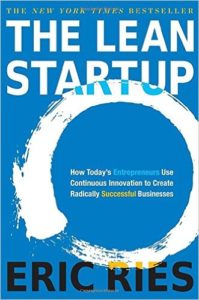The Lean Startup is a book written by Eric Ries. After consulting for other startups he decided to take his learnings and break them down into a series of teachings that make up “The Lean Startup”.
The chapters cover everything from getting an idea in front of customers, knowing when to pivot, and much more.
This book is a great read for anyone thinking of starting a business and wants to hear anecdotal stories on how you can bootstrap your way to success and iterate quickly.
Biggest Insights
For me, the two biggest takeaways were “The Concierge MVP” and the chapter on “Pivot vs Preserve”.
The Concierge MVP
The idea behind this is that you create a product or a service and go all out for the first few clients to provide them a great experience.
To them, the software or business might seem highly automated and well ran.
But behind the scenes, you are doing everything manually.
This is done to prove that the concept works, there is a market for it, and you have the pricing and market fit right.
From there you will need to figure out how to scale and automate.
Pivot vs Preserve
I think this is the hardest decision an entrepreneur has to make.
Eric Ries does a great job of talking about vanity metrics (things business tracks that don’t actually move the needle) and ways to make sure you are tracking what matters.
For instance, everyone that pulls reports should be pulling from the same data (not a third party) and making the data simple and understandable for all.
For me personally, this is where I often fail at getting my ideas off the ground. I pivot too quickly and reading this chapter helped me understand ways to stick with it a little while longer.
Join The Newsletter
Get occasional emails from me when I publish new projects and articles.
